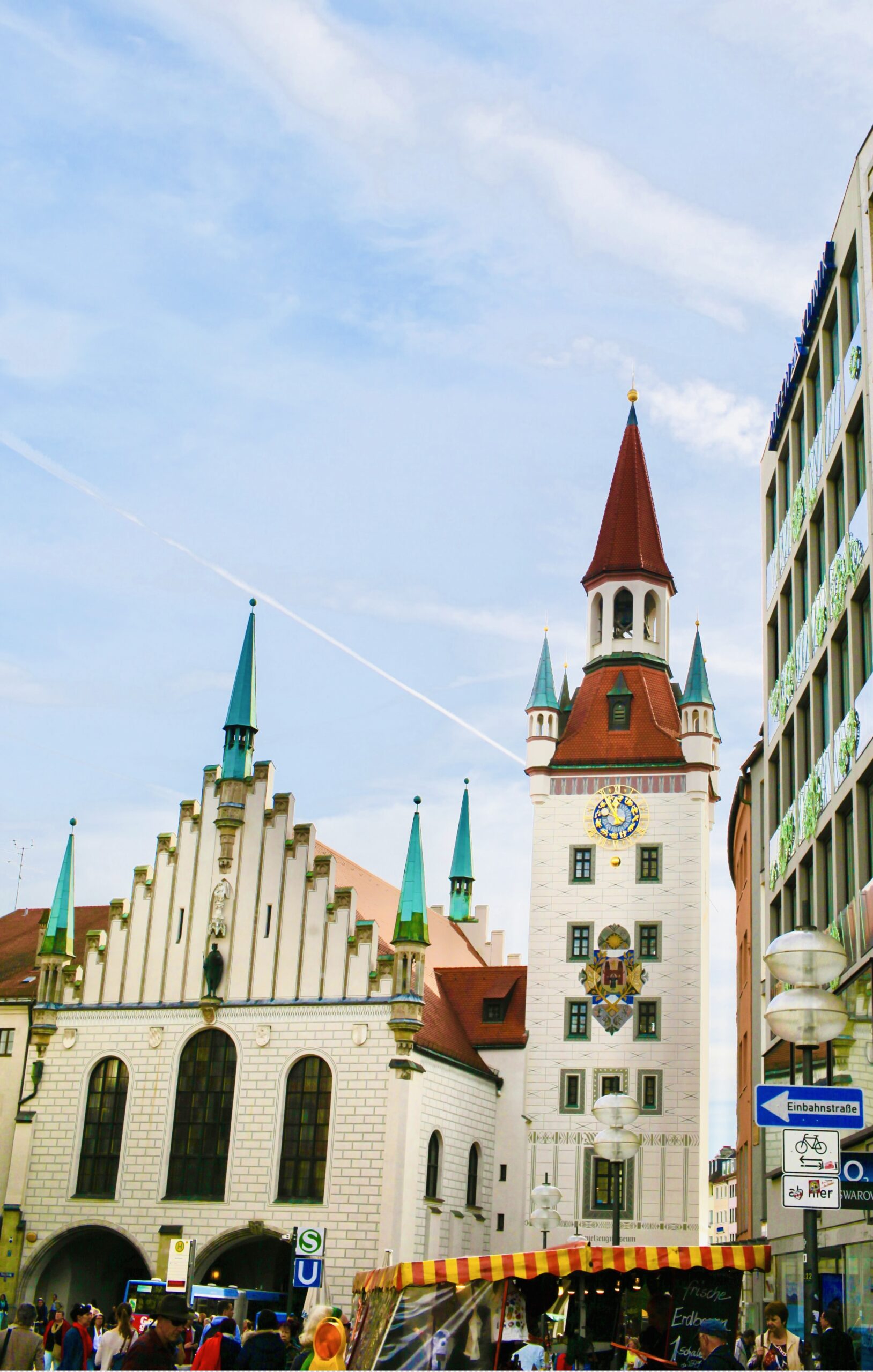My closest friend now lives in Munich, Germany. This was the first time seeing her, her family, and her animals, and and it’s been a while.
Munich is the capital of Bavaria, in the south of the country. Famous for Oktoberfest and its beer halls, Munich I’m told is very different from the rest of Germany. I actually know very little about the country, only from the few days we were there while on the bus tour my family took many, many years ago. I didn’t go to see Munich as much as I went to see my friends and I got a glimpse of their daily life – picking up the kids, going to the bakery, shopping, and walking the dogs.
We also had some outings, including a hike by the river and having a meal in a beer garden outside of Munich. We took the train into town and my friend showed me Marienplatz where we strolled through the food market. She pointed out the landmark buildings, which I appreciated as someone with an interest in both history and architecture. Then we had a delicious lunch.
Marienplatz
This is the city centre of Munich which was founded in 1158 by Henry the Lion, Duke of Bavaria. Being where all the streets converged, Marienplatz was an important part of daily life. This was the market square, a primary hub of business and commercial activity. Farmers and artisans had gathered around the Fish Fountain with their crops and wares.
Here we find many historic buildings including the restored Old Town Hall and New Town Hall. As a pedestrian zone (since 1972), it is an easy place for tourists to wonder around to look at the architecture, grab a bite to eat, and stop at the market where massive amounts of cheese, fruits, and other food are sold.
Previously it was called Schrannenplatz, which was renamed Marienplatz (Mary’s Square) on October 9, 1854. In the summer that year, cholera broke out and it was hoped that renaming it and placing it in the care of the Bavarian patron saint Mary, the city would be protected and the epidemic ended.
At the centre of Marienplatz is a column that stands at nearly forty feet tall. Mariensäule (the Marian or St Mary Column) was erected in 1638. It is a symbol of gratitude. The city was spared by the Swedes during their occupation in the Thirty Years’ War. On top of the column is a gilded statue of the Virgin Mary.



Neues Rathaus – New City Hall
In the tower alcove of the New City Hall is the world-famous glockenspiel and one of the largest in Europe. This is a mechanical cuckoo clock that plays a repertoire of twenty-two pieces of music. It has forty-three bells and a carousel of thirty-two life-size carved wooden figurines. Twice daily at 11 am and 12 noon, scenes from the 16-century are reenacted. Between March and October, an additional one takes place at 5 in the afternoon. On Good Friday, the glockenspiel does not sound.
The three scenes are:
- A Bavarian thrusts his French opponent off his horse at a jousting tournament in 1568 in Marienplatz
- Barrel makers dance and celebrate in 1517 after a plague.
- A night watchman blows his horn and a guardian angel stretches their hand over the Munich Child (Münchner Kindl) which is the symbol on Munich’s coat of arms.





Altes Rathaus – Old City Hall
Marienplatz houses both the old and new City Hall. New City Hall was built in the gothic revival style while Old City Hall has a more plain façade and appears more modern. The exterior of Old City Hall, which dates back to the 14th century, has been redesigned and reconstructed. In 1460, it was actually burned down as a result of a lightning strike. Since its original late-Gothic style, the interior has also transformed over time, through Baroque, Renaissance and Historicist influences. Today it still holds ceremonial events in the ballroom, though city administration was moved in 1874.
The dance hall or “Tanzhaus” is on the second floor. Its wooden barrel vaulted ceiling is a masterpiece example of Munich Gothic style and the work of Hans Wengler. The dance hall has remained in its original architectural design, even through its restoration after being destroyed in the last world war. Bavarian noble families’ coats of arms have been embedded in the ceiling.
Now Old City Hall is also where the Toy Museum is located. Over four floors, this museum showcases four centuries of toys. Wooden toys, steam engines, Barbies, tin toys, teddy bears, and dolls. The Toy Museum began as Ivan Steiger‘s personal collection. He is a Czech artist, writer, and director who moved to Germany in 1969. He opened the museum in 1983.
